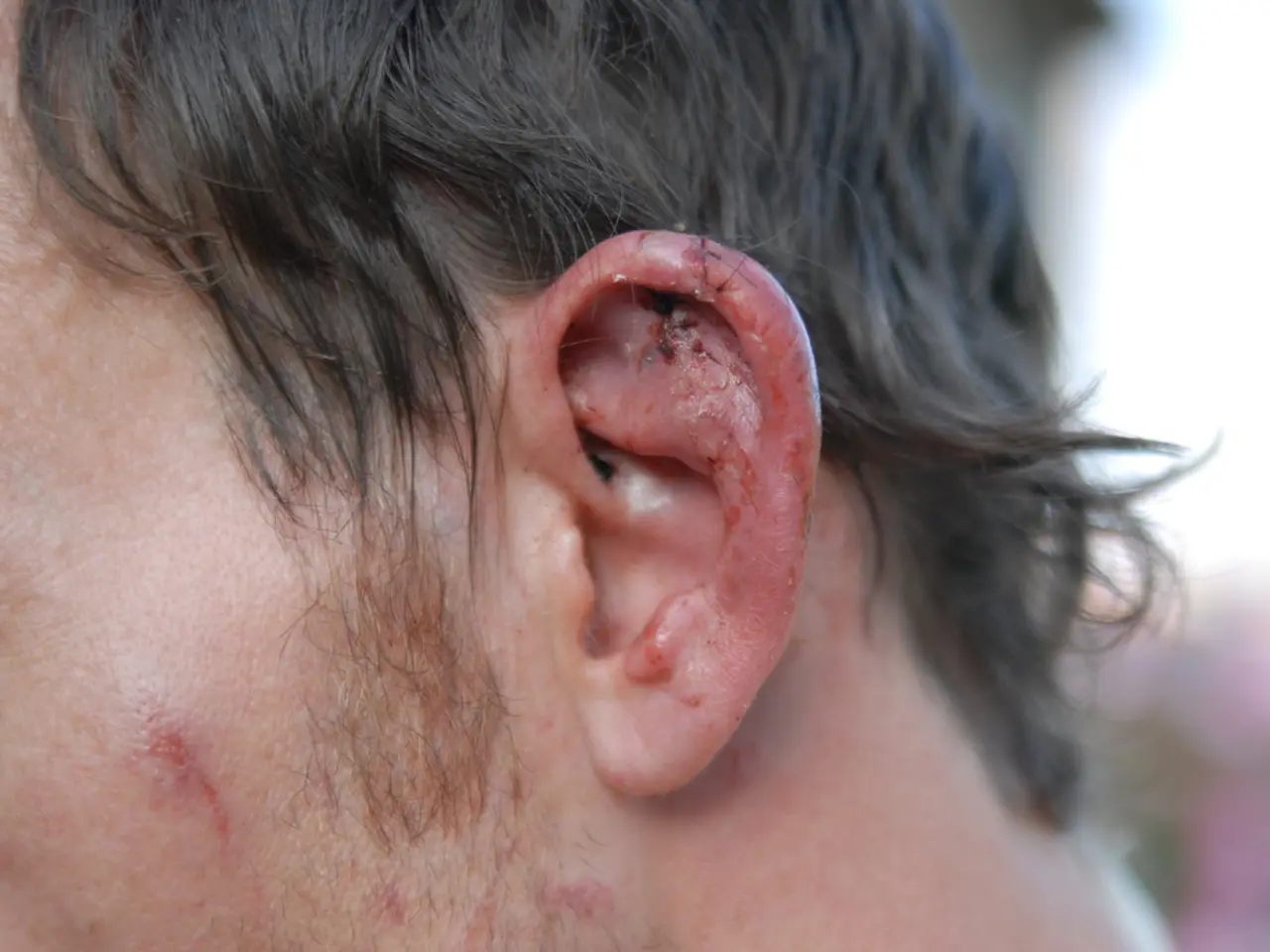Fainting versus Seizures: Overlaps, Distinctions, and Proper Responses
In the realm of health and wellbeing, understanding the differences between syncope (fainting) and seizures is crucial. While both conditions can cause temporary loss of consciousness, they have distinct causes and symptoms.
Syncope is most commonly caused by a condition known as vasovagal syncope, a form of autonomic mediated syncope triggered by a temporary drop in blood flow to the brain. This can be caused by emotional stress, sudden changes in posture, or other triggers leading to a sudden drop in blood pressure and reduced cerebral perfusion. Syncope is characterized by premonitory symptoms such as nausea, sweating, tiredness, or tunnel vision before loss of consciousness.
On the other hand, seizures stem from abnormal, excessive, and synchronous neuronal activity due to an imbalance between excitatory and inhibitory neurotransmission in the brain. Unlike syncope, seizures usually do not have identifiable precipitating events like stress or position change.
Key differences between the two conditions include:
- Syncope (fainting): Primarily caused by vasovagal syncope, characterized by premonitory symptoms, and often related to autonomic nervous system responses. Other causes can include dehydration, heart conditions, or neurocardiogenic mechanisms.
- Seizures: Caused by abnormal brain electrical activity, usually not triggered acutely by identifiable precipitating events, and no typical premonitory symptoms.
It's important to note that convulsive syncope is not a form of seizure but is when someone's muscles briefly shake or jerk while unconscious due to reduced blood flow to the brain.
If someone faints, they should be laid on their back, with their legs raised if possible, unless they are pregnant, in which case they should be laid on their side. In all cases, emergency services should be contacted if the individual does not wake after 1 minute, is not breathing, finds it hard to move or speak, has chest pain or heart palpitations, has injured themselves, has fainted while exercising or lying down, or is shaking or jerking.
Testing for certain biomarkers, such as neuron-specific enolase, creatine phosphokinase, and serum lactate dehydrogenase, may help with diagnosing seizures. An EEG can also be used to detect the brain activity characteristic of seizures.
Anyone who has experienced one or more seizures or episodes of passing out should seek a doctor's advice. If someone experiences two or more unprovoked seizures, doctors may diagnose epilepsy.
In summary, vasovagal (neurocardiogenic) syncope is the most common cause of syncope and differs fundamentally from seizures, which are due to brain electrical disturbances rather than transient circulatory insufficiency. It's crucial to understand these differences to ensure prompt and appropriate medical attention in case of an emergency.
- Cancer, a chronic disease, can have various symptoms and requires regular medical check-ups for early detection.
- Psoriasis, a skin-condition, is characterized by red, scaly patches on the skin and can sometimes be a symptom of an underlying autoimmune disorder.
- Arthritis, another chronic disease, affects joints and can cause pain, swelling, and stiffness.
- Macular degeneration, a condition related to eye-health, is the leading cause of vision loss among people aged 50 and older.
- Migraine, a neurological disorder, is known for its severe headaches and is often accompanied by symptoms like nausea, sensitivity to light, and vision changes.
- Breast health is crucial for women, with regular self-examinations and mammograms helping in early detection of breast cancer.
- First aid and safety training should cover both syncope (fainting) and seizures as they can occur unexpectedly in the workplace or at home.
- Predictive biomarkers can aid in diagnosing conditions like seizures, but their presence alone isn't conclusive evidence of the condition.
- Dry skin, a common skin-care issue, can be alleviated with moisturizers and humidification.
- Epilepsy seizures are due to abnormal brain electrical activity, and anyone experiencing multiple unprovoked seizures should consult a doctor.
- HIV is a viral infection that weakens the immune system, making individuals more susceptible to various chronic diseases and infections.
- AQ test is used to assess a person's sensitivity to environmental irritants, which can contribute to conditions like asthma, a type of respiratory health condition.
- Psoriatic arthritis is an inflammatory arthritis that affects people with psoriasis, an autoimmune disorder.
- Science plays a crucial role in understanding health conditions, developing new therapies and treatments, and improving the quality of life for individuals with chronic diseases.
- Good sleep hygiene is essential for overall health and wellness, as lack of sleep is linked to various conditions such as obesity, diabetes, and cardiovascular diseases.
- Workplace-wellness programs focus on promoting healthy lifestyle choices, managing stress, and providing resources for employees dealing with medical conditions.
- Chronic diseases such as diabetes, hypertension, and heart disease have high prevalence rates and require ongoing management for effective control.
- Cancé (French for cancer) is the second leading cause of death worldwide, emphasizing the importance of early detection and effective treatments.
- Digestive health is crucial for overall well-being, and conditions like irritable bowel syndrome (IBS) can significantly impact a person's quality of life.
- Hearing health is often overlooked, but conditions like hearing loss and tinnitus can have a profound impact on mental health and overall well-being.




